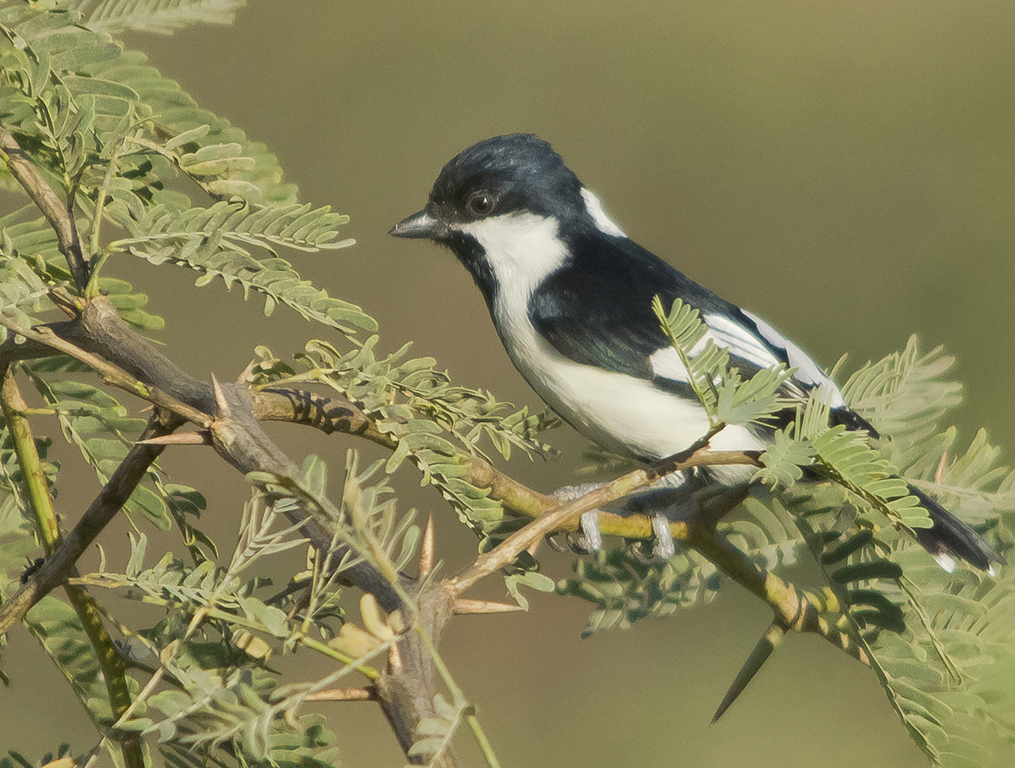|
Melanochlora Sultanea
The sultan tit (''Melanochlora sultanea'') is an Asian forest bird with a yellow crest, dark bill, black upperparts plumage and yellow underparts. The sexes are similar. The female has greenish-black upperparts and a yellowish throat. The young bird is duller than the adult and has a shorter crest. It is the only member of the monotypic genus ''Melanochlora'', which is fairly distinct from the ''Parus'' tits with the nearest relative being the monotypic '' Sylviparus''. Description The male has the forehead and crown with the crest brilliant yellow; the whole upper plumage, sides of the head and neck, chin, throat, and breast-deep black glossed with green, the edges of the feathers of the upper plumage with a metallic lustre, and the outermost tail-feathers tipped with white; lower plumage from the breast downwards deep yellow, the thighs barred or mottled with white. The recumbent crest is raised when the bird is alert or alarmed. The female has the yellow parts duller; the u ... [...More Info...] [...Related Items...] OR: [Wikipedia] [Google] [Baidu] |
Mahananda Wildlife Sanctuary
Mahananda Wildlife Sanctuary (Pron: móhɑ́nɑ́ndaa) is located on the foothills of the Himalayas, between the Teesta and Mahananda rivers. Situated in the Darjeeling district of West Bengal, India; it comes under Darjeeling Wildlife division and can be reached from Siliguri in 30 minutes. Sukna, the gateway to the sanctuary, is only 13 km from Siliguri and 28 km from Bagdogra airport. The sanctuary sprawls over 159 km2 of reserve forest and was started as a game sanctuary in 1955. In 1959, it got the status of a sanctuary mainly to protect the Indian bison and royal Bengal tiger, which were facing the threat of extinction. Geography The forest type in Mahananda WLS varies from riverain forests like Khayer-Sisoo to dense mixed-wet forest in the higher elevation in Latpanchar area of Kurseong hills. The variation in elevation and forest types helps the existence of a large number of species of mammals, birds and reptiles. Varying elevation from 166 metres ... [...More Info...] [...Related Items...] OR: [Wikipedia] [Google] [Baidu] |
Lophophanes
''Lophophanes'' is a small genus of birds in the family Paridae. The genus name is from the Ancient Greek Ancient Greek includes the forms of the Greek language used in ancient Greece and the ancient world from around 1500 BC to 300 BC. It is often roughly divided into the following periods: Mycenaean Greek (), Dark Ages (), the Archaic peri ... ''lophos'', "crest", and ''phaino', "to show". It contains the following species: References Bird genera {{Paridae-stub ... [...More Info...] [...Related Items...] OR: [Wikipedia] [Google] [Baidu] |
DNA Sequence
DNA sequencing is the process of determining the nucleic acid sequence – the order of nucleotides in DNA. It includes any method or technology that is used to determine the order of the four bases: adenine, guanine, cytosine, and thymine. The advent of rapid DNA sequencing methods has greatly accelerated biological and medical research and discovery. Knowledge of DNA sequences has become indispensable for basic biological research, DNA Genographic Projects and in numerous applied fields such as medical diagnosis, biotechnology, forensic biology, virology and biological systematics. Comparing healthy and mutated DNA sequences can diagnose different diseases including various cancers, characterize antibody repertoire, and can be used to guide patient treatment. Having a quick way to sequence DNA allows for faster and more individualized medical care to be administered, and for more organisms to be identified and cataloged. The rapid speed of sequencing attained with modern D ... [...More Info...] [...Related Items...] OR: [Wikipedia] [Google] [Baidu] |
Cytochrome B
Cytochrome b within both molecular and cell biology, is a protein found in the mitochondria of eukaryotic cells. It functions as part of the electron transport chain and is the main subunit of transmembrane cytochrome bc1 and b6f complexes. Function In the mitochondrion of eukaryotes and in aerobic prokaryotes, cytochrome b is a component of respiratory chain complex III () — also known as the bc1 complex or ubiquinol-cytochrome c reductase. In plant chloroplasts and cyanobacteria, there is an analogous protein, cytochrome b6, a component of the plastoquinone-plastocyanin reductase (), also known as the b6f complex. These complexes are involved in electron transport, the pumping of protons to create a proton-motive force ( PMF). This proton gradient is used for the generation of ATP. These complexes play a vital role in cells. Structure Cytochrome b/b6 is an integral membrane protein of approximately 400 amino acid residues that probably has 8 transmembrane segments. ... [...More Info...] [...Related Items...] OR: [Wikipedia] [Google] [Baidu] |
MtDNA
Mitochondrial DNA (mtDNA or mDNA) is the DNA located in mitochondria, cellular organelles within eukaryotic cells that convert chemical energy from food into a form that cells can use, such as adenosine triphosphate (ATP). Mitochondrial DNA is only a small portion of the DNA in a eukaryotic cell; most of the DNA can be found in the cell nucleus and, in plants and algae, also in plastids such as chloroplasts. Human mitochondrial DNA was the first significant part of the human genome to be sequenced. This sequencing revealed that the human mtDNA includes 16,569 base pairs and encodes 13 proteins. Since animal mtDNA evolves faster than nuclear genetic markers, it represents a mainstay of phylogenetics and evolutionary biology. It also permits an examination of the relatedness of populations, and so has become important in anthropology and biogeography. Origin Nuclear and mitochondrial DNA are thought to be of separate evolutionary origin, with the mtDNA being derived from t ... [...More Info...] [...Related Items...] OR: [Wikipedia] [Google] [Baidu] |
Richard Bowdler Sharpe
Richard Bowdler Sharpe (22 November 1847 – 25 December 1909) was an English zoologist and ornithologist who worked as curator of the bird collection at the British Museum of natural history. In the course of his career he published several monographs on bird groups and produced a multi-volume catalogue of the specimens in the collection of the museum. He described many new species of bird and also has had species named in his honour by other ornithologists including Sharpe's longclaw (''Macronyx sharpei'') and Sharpe's starling (''Poeoptera sharpii''). Biography Richard was born in London, the first son of Thomas Bowdler Sharpe. His grandfather, Reverend Lancelot Sharpe was Rector of All Hallows Staining. His father was a publisher on Skinner Street and was best known for being the publisher of ''Sharpe's London Magazine'', an illustrated periodical (weekly but monthly from 1847). His care from the age of six was under an aunt, Magdalen Wallace, widow of the headmaster at Gramm ... [...More Info...] [...Related Items...] OR: [Wikipedia] [Google] [Baidu] |
Melaniparus
''Melaniparus'' is a genus of birds in the tit family. The species were formerly placed in the speciose genus '' Parus'' but were moved to ''Melaniparus'' based on a molecular phylogenetic analysis published in 2013 that showed that the members formed a distinct clade. The genus ''Melaniparus'' had originally been introduced by the French naturalist Charles Lucien Bonaparte Charles Lucien Jules Laurent Bonaparte, 2nd Prince of Canino and Musignano (24 May 1803 – 29 July 1857), was a French naturalist and ornithologist. Lucien and his wife had twelve children, including Cardinal Lucien Bonaparte. Life and career ... in 1850. The type species was subsequently designated as the southern black tit (''Melaniparus niger''). The name of the genus combines the Ancient Greek ''melas'', ''melanos'' "black" and the genus '' Parus'' introduced by Carl Linnaeus in 1758. The following species, all from Africa and mostly having dark plumage, have been placed in the genus: Referenc ... [...More Info...] [...Related Items...] OR: [Wikipedia] [Google] [Baidu] |
Machlolophus
''Machlolophus'' is a genus of birds in the tit family. The species were formerly placed with many others in the genus '' Parus'' but were moved to ''Machlolophus'' based on a molecular phylogenetic analysis published in 2013 that showed that the members formed a distinct clade A clade (), also known as a monophyletic group or natural group, is a group of organisms that are monophyletic – that is, composed of a common ancestor and all its lineal descendants – on a phylogenetic tree. Rather than the English term, .... The name ''Machlolophus'' was introduced by the German ornithologist Jean Cabanis in 1850. The word is derived from the classical Greek ''makhlos'' meaning luxuriant and ''lophos'' meaning crest. The following species, all from Asia, have been placed in the genus: References Bird genera {{Paridae-stub ... [...More Info...] [...Related Items...] OR: [Wikipedia] [Google] [Baidu] |
Parus Major
The great tit (''Parus major'') is a passerine bird in the tit family Paridae. It is a widespread and common species throughout Europe, the Middle East, Central Asia and east across the Palearctic to the Amur River, south to parts of North Africa where it is generally resident in any sort of woodland; most great tits do not migrate except in extremely harsh winters. Until 2005 this species was lumped with numerous other subspecies. DNA studies have shown these other subspecies to be distinct from the great tit and these have now been separated as two distinct species, the cinereous tit (''Parus cinereus'') of southern Asia, and the Japanese tit (''Parus minor'') of East Asia. The great tit remains the most widespread species in the genus ''Parus''. The great tit is a distinctive bird with a black head and neck, prominent white cheeks, olive upperparts and yellow underparts, with some variation amongst the numerous subspecies. It is predominantly insectivorous in the summer, ... [...More Info...] [...Related Items...] OR: [Wikipedia] [Google] [Baidu] |
Parus Monticolus
The green-backed tit (''Parus monticolus'') is a species of bird in the family Paridae. It is found in Bangladesh, Bhutan, China, India, Laos, Myanmar, Nepal, Pakistan, Taiwan and Vietnam. Its natural habitats are boreal forest, temperate forest, and subtropical or tropical moist lowland forest. References External links * * green-backed tit Birds of Central China Birds of the Himalayas Birds of Eastern Himalaya Birds of Laos Birds of Vietnam Birds of Taiwan green-backed tit The green-backed tit (''Parus monticolus'') is a species of bird in the family Paridae. It is found in Bangladesh, Bhutan, China, India, Laos, Myanmar, Nepal, Pakistan, Taiwan and Vietnam. Its natural habitats are boreal forest, temperate for ... Taxonomy articles created by Polbot {{Paridae-stub ... [...More Info...] [...Related Items...] OR: [Wikipedia] [Google] [Baidu] |








